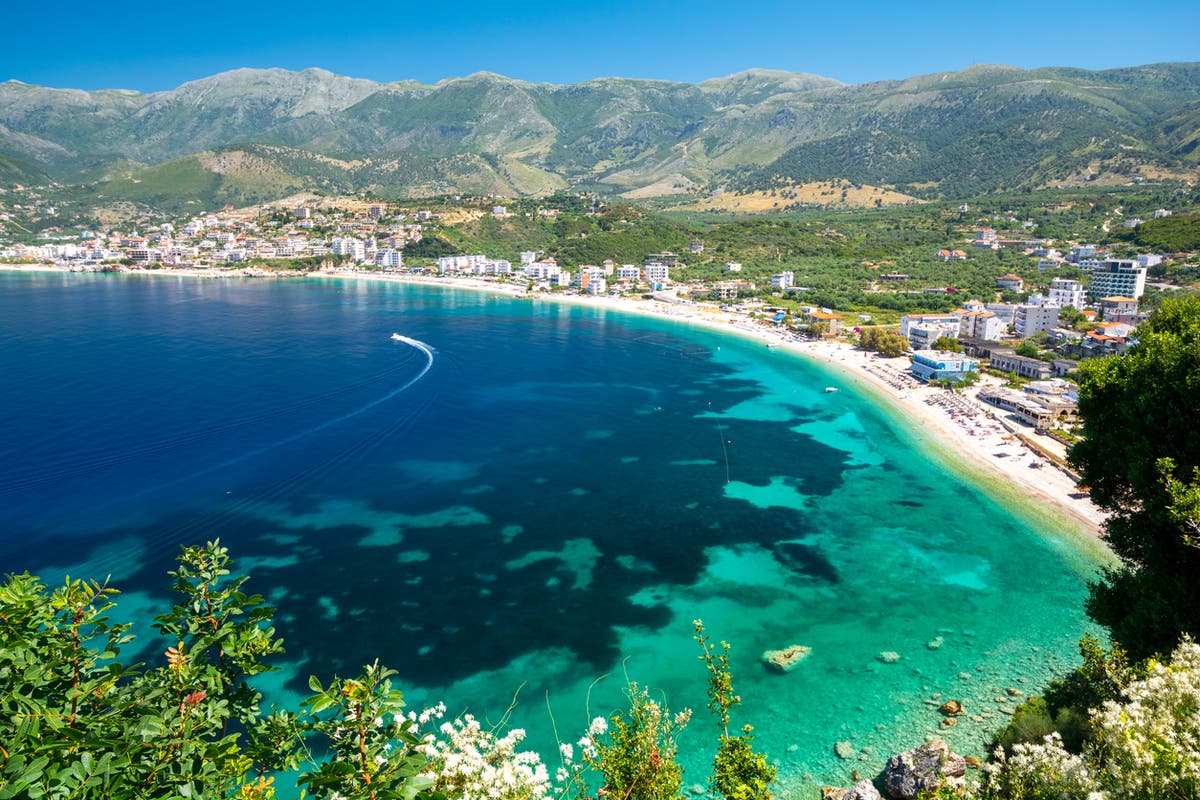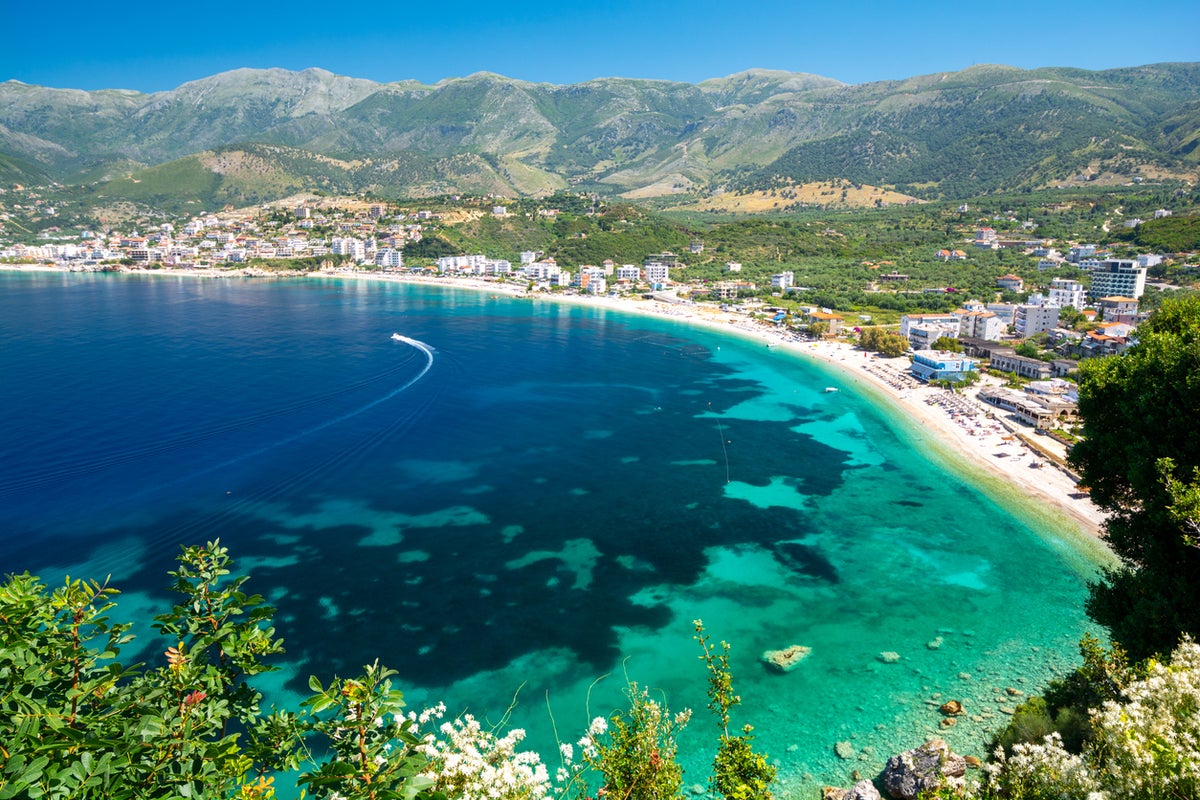Simultaneously mountainous and coastal, beloved by devoted hikers and sun-worshippers alike, on the face of it Albania seems like a cultural melting pot with Greek, Italian and Turkish influences leaving traces over the centuries. But delve a little deeper and let the Ancient Illyrian land and language reveal itself; it’s one of strength, resilience and contagious joie de vivre.
With the second largest Islamic population in Europe after Kosovo (around 60 per cent of Albanians are Muslim), the country is also the poster child for religious tolerance, with stunning mosques and cathedrals built side by side in the cities and towns of the Balkan nation. It was a stronghold of the Islamic Ottoman Empire for over 500 years and still home to some incredible architecture of the age, despite the best attempts by 20th century dictator Enver Hoxha to destroy it. A visit is sure to be met by very friendly and welcoming locals and some of the most affordable prices in the continent.
Travel restrictions and entry requirements
As of 1 May 2022, all Covid-19 related travel requirements have been lifted. Travellers no longer need to show proof of vaccination or a negative PCR test in order to enter Albania.
Best time to go
With a similarly balmy climate to neighbouring Greece, Albania is one of the sunniest countries in Europe, with sun-drenched hours peaking between April and October. The best time for hiking in the mountains are the quieter spring and autumn months, but thanks to the high altitude, summer also works if you don’t mind more crowded trails. Summer is of course the best time for exploring the beaches of the Riviera, but temperatures do soar, so if exploring the cities and Ottoman towns is high on your agenda, spring or autumn are also preferable.
Top regions
Tirana
Tirana was a quiet inland town until the capital was moved here in 1912. The considerate 20th century town planning gifts pleasant leafy, wide streets with plenty of shade from the soaring summer heat. The city’s epicentre is the recently pedestrianised Skanderbeg Square, a grand space, home to the beautiful 18th-century Et’hem Bej Mosque, and the angular communist era Opera House and National History Museum. Around the corner, market Pazari i Ri is lined with food stalls and restaurants, but it’s Blloku you’ll want to graze in ‒ this buzzy corner of town was formerly a residential neighbourhood for the governing communist politicians, and is now a vibrant hub of cafes, bars, restaurants and clubs.
Shkoder and the Albania Alps
Established by Ancient Ilyrian tribes in the 4th century BC, Shkoder has seen some action in its time. The gateway to Albania if you’re arriving from northern Europe by bus or car, it’s a peaceful, atmospheric little city ‒ so give it some of your time, as it’s more than just a jumping off point for the mountains. Rent a bicycle and ride out to the lake, dig through the hidden flea markets and find yourself moved by Marubi National Museum of Photography. When moving on, minivans go up to Theth National Park every morning where you can try shorter, local hikes or follow the popular day-long trail to Valbonës, where vans will drive you back down to Shkoder the next afternoon.
Gjirokaster
Famous for its fantastically well preserved, sophisticated Ottoman-era architecture, the winding cobblestoned streets of Gjirokaster are Unesco-protected for good reason. Set back from the coast and nestled up in the hills, the stunning architecture of the old town was once home to one of the biggest hubs of Sufism (a mystical, meditation based school of Islam) outside of Turkey. While only a fraction of the religious sights survived Enver Hoxha’s purge, churches and mosques still live side by side here, as they have done for centuries. Gjirokaster Castle is undoubtedly one of the best in the country (competition is stiff as there are over 150) with glimmering white stone and great fortress walls.
The Riviera
The 120km coastal stretch from Vlore to Sarande known as the Albanian Riviera, comprises of picturesque hillside villages and majestic pale blue hues as the Ionian Sea laps its pebble beaches. Popular stops are festival hub Dhermi and backpacker favourite Himare, or go high end at the luxurious cluster of tiny islands in Ksamil. One highway goes along the coast, served by a handful of buses per day in either direction ‒ take this road to explore the lesser trodden beaches along the way, hiring a car or moped, or if you’re feeling brave, do as the young Albanians do and hitch-hike. The crystal clear waters of the riviera are unexpectedly cold, even in the heat of the summer, thanks to springs of water flowing out from the mountains and under the sea bed.
Underrated destinations
Berat and Osumit Canyon
Just as impressive as Gjirokaster, but often overlooked in its favour, is fellow Ottoman-era town Berat. Known as the city of a thousand windows, Berat’s glass panes dazzle the viewer, from the banks of the river bend right up into the hills. The Citadel dates to the 13th century with a fantastic little Byzantine, churches inside ‒ pop to St Mary’s for show stopping mosaics. There are of course gorgeous mosques here, too ‒ Berat’s great example of the religious tolerance that Albania is so good at. Take a day trip from here to Osumit Canyon where you can wade through the river past the rock faces and scoop up mud from the riverbed to use as a nourishing face mask.
Butrint Archaeological Park
Greek, Roman and Byzantine ruins all grace this former metropolis, perched on the edge of the Riviera. Butrint is undoubtedly home to the best ruins in Albania and indeed the West Balkans but is often bypassed on the way to the beach. It’s a sprawling site with buildings dotted around the lagoon, (imagine Pompeii in the middle of a bayou), including Roman baths, a Greek amphitheatre and Venetian towers. Prepare to spend the day there and wear extremely comfortable shoes. There’s a later Ottoman addition that’s worth the hike too; infamous leader Ali Pasha built a fortress here to keep an eye on Napoleon, who’d taken nearby Corfu.
Korçë
Home of Albania’s crisp local lager, Korçë is set amidst picturesque mountains and immersed in nature, yet less trodden by tourists than other parts of the country. Hiking is top of the list of things to do here, but the city is also brimming with fantastic architecture and cultural institutions. “Gjon Mili” Photography Museum gives a glimpse into 20th century life here, while the Medieval Museum, doing what it says on the tin, is one of the country’s best. The show stopping, orthodox Resurrection of Christ Cathedral gets the most attention but tiny Iliaz Bej Mirahori Mosque is also unmissable, as one of the country’s oldest.
Best things to do
Take a beautiful hike
Hiking from Theth to Valbonës, through the Albanian Alps (or the Accursed Mountains as they are sometimes called) tops everyone’s bucket list for a reason. Views this stunning rarely come on such a manageable hike ‒ and it is, with the right footwear, manageable for novice trekkers, as long as you’re able to walk 16km, which takes six to nine hours. This trip takes at least three days on an itinerary, typically with two overnights ‒ it’s a travel day each end as minivans go from Shkoder to either Theth or Valbonës every morning and back in the afternoons, with a full day of hiking in the middle.
Swim in pools and rivers
Take a cold water dip in the unusual sights of natural beauty that Albania has by the dozen. The top three are the Blue Eye, a turquoise pool of chilly mountain spring water (usually around 10-13° Celsius) en route to Gjirokaster; the aforementioned Osumi Canyon near Berat, where you can raft or water hike along the River Osum; or the most intrepid (the road from Shkoder isn’t great) will love swimming in the River Shalë, which flows inside the Albanian Alp range.
Search out the flea markets
These exist in every town and city, rarely marked on mapping apps, but ask a local where the nearest one is and you will be rewarded beyond your wildest, vintage loving dreams.
Getting around
Car or moped hire is comparatively cheap in Albania but if you prefer to use public transport, get ready to embrace a mildly mysterious but fully functional bus network that spans most corners of the country. Use local site Gjirafa to check the long distance bus times and schedules, although the service may leave a bit earlier or later, a definite go with the flow attitude needed. There’s no pre-booking app or sites, you pay the driver so have roughly the correct change ‒ prices are listed on Gjirafa usually too.
How to get there
There are regular direct flights from London to Tirana on Wizz Air, which is both the cheapest and quickest option. But there are a number of flight-free routes, too, depending on the time you have to hand. The quickest flight-free way would be to take trains to Bari in Italy (via Paris, Milan and Rome) and hop on the daily ferry over to Durres on the northern coast of Albania. Or if Balkan buses appeal more than the ferry, take the train as far as Belgrade (via Zagreb) and bus down into Shkoder from there.
Money-saving tip
Albania is remarkably cheap, compared to the majority of other European nations, but if you’re really on a shoestring, take your own tent with you and utilise one of the countless, fantastic campsites that are dotted around the length and breadth of the country.
FAQs
What’s the weather like?
Albania is blessed with approximately 300 days of sunshine a year, so spring and autumn are fantastic times to go. The summer sees temperatures soar into the 40s so stick to coastal destinations in the height of July and August.
What time zone is it in?
GMT+1.
What currency do I need?
Albanian Lek.
What language is spoken?
Albania (aka Shqipërisë) is home to Albanians (Shqipëri) who speak Albanian (Shqip).







More Stories
Everything you need to know about July and August rail industrial action
‘It’s cancerous’: How seaside towns fight back against second home owners
EasyJet flight diverted after passenger medical emergency on board